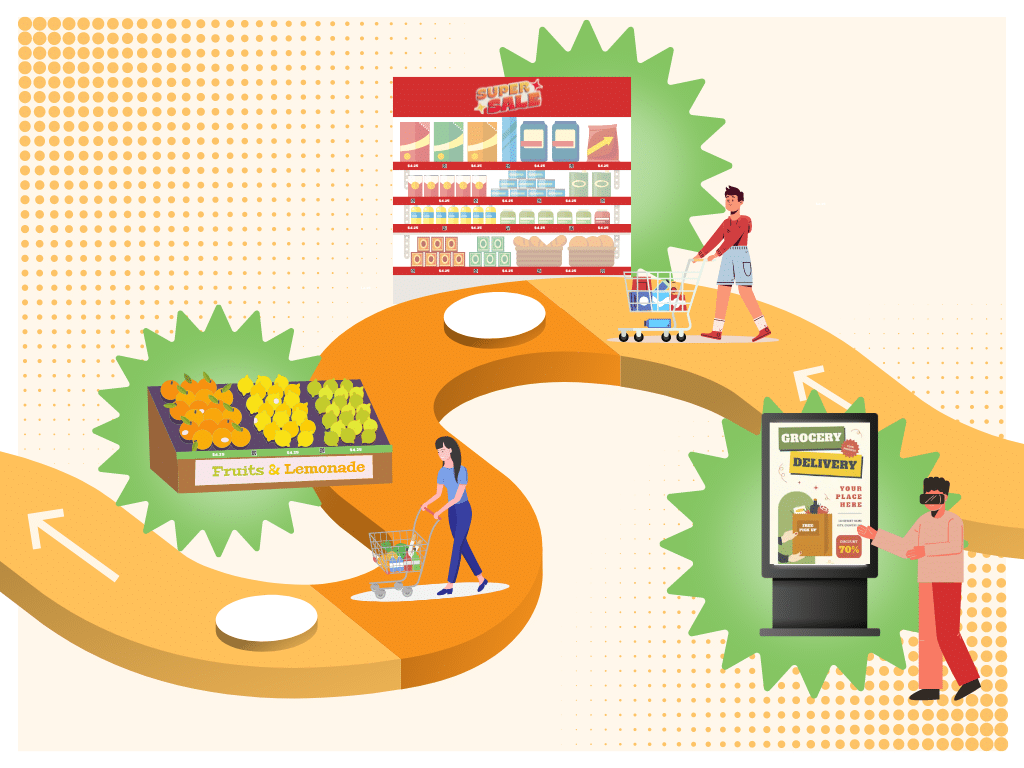The Infrastructure Needed to Create a High-Performing In-Store RMNs
The second in a seven-part series about in-store retail media networks by Gable.
The modern consumer’s path to purchase bears little resemblance to the linear journeys of old. Shoppers now chart winding courses spanning devices, bridges between online and physical stores, and everything in between. The gaps that once separated in-store and out-of-store shopper data are narrowing, thanks to advanced retail media network hardware that creates immersive brand interactions.
From contextual on-shelf media influencing shoppers to augmented reality portals, RMN’s infrastructure ingredients are revolutionizing engagement along the integrated path to purchase. In this article, we’ll take a closer look at the hardware grocers and other retailers are using to create immersive shopping experiences across the buyer journey and the preventative measures you can take to minimize costly downtime.
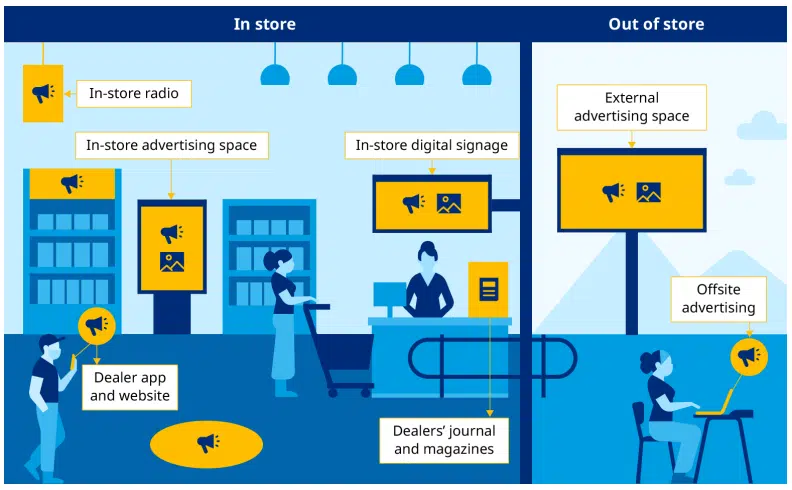
In-Store Digital Displays and End Cap Displays Serve Up Retail Media Advertisements at the Right Time
Retail media data is advantageous to all kinds of brands, particularly in the grocery category. Grocery shoppers make purchases several times a month and often multiple times per week. And these purchases cut across many categories.
Prior to starting its retail media business, supermarket chain Kroger built digital experiences for customers to search for products, create grocery lists, and receive digital coupons. These tools made it possible for its RMN (KPM) to introduce brands in a relevant way. Brian Spencer, KPM’s marketing director said, “Unbranded search terms are 90% of the top 500 searches in Kroger digital touchpoints. That means many customers are looking for products without a specific brand in mind. Directing those customers to a specific brand or product is a logical next step in their journeys.”
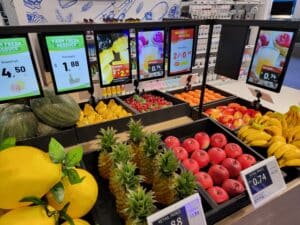
Building out these in-store retail media networks (RMNs) requires the following hardware:
- HD Touchscreen Units: From produce sections to checkout lines, 10-15 inch screens allow dynamic brand messaging matched to shopper locations
- End Cap Displays: Grocers can now equip this prized real estate with 15-55 inch LCD screens through attention-grabbing sight, sound, and motion. These versatile extensions of an RMN can display targeted video advertisements or custom-branded content. The information can be match-adjacent products that are personalized for the shopper currently engaging based on real-time data insights.
- Smart Carts/Smart Baskets: Mounted tablets or touchscreens on carts and baskets allow shoppers to scan items, view totals, and see promotions. Integrated weight sensors, barcode scanners, and credit card readers are some of the few hardware integrations now being integrated with a grocer’s RMN. Connecting these assets sheds additional light into shopper affinities and micro-behaviors as it relates to in-store layouts.
- ESLs: Electronic shelf labels transform printed shelf tags into networked, adaptable retail media canvasses. Grocers can now instantly update content on thousands of labels across hundreds of locations to help shoppers get timely, accurate product information. The connected shelf edge infrastructure includes thin ePaper displays that run off of low-energy Bluetooth/NFC connectivity. Integrated sensors provide grocers beneficial trigger alerts for low inventory or temperature fluctuations.
Choice of hardware is critical to success, as not all screens are equal or suitable for a retail environment. The need for 24/7 operation, brightness, size of screen, design of housing, and communication options are just some of the decisions to be made. RMN hardware like end cap displays require careful placement in order to optimize sightlines and foot traffic patterns that influence shopper perception and drive performance. It’s recommended that retailers work with a visual communications solutions consultant to strategize, design, and install networks to maximize return on ad spend.
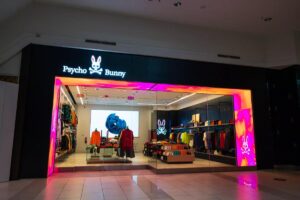
Building Immersive Experiences Through Emerging Modalities

- AR Brand Portals: Shoppers can scan packages and tap into a portal to a brand’s world
- VR Product Demos: VR demonstrations showcase essential product uses and benefits
- Connected Packaging: Chips, wrappers, or labels detect when picked up and activate messaging
By merging the interactivity of gaming with the practicality of shopping, these games offer a unique way to explore products and make purchasing decisions. As technology continues to advance, VR supermarket games hold the potential to shape the future of retail, offering consumers a convenient and immersive way to engage with products and brands and offering grocers a new revenue stream.
How to Reduce RMN Downtime and Disruption
Even minor retail media ad delivery interruptions frustrate shoppers and disrupt the consumers in their path to purchase. Whether from unit failures, connectivity losses, or software glitches, retailers must establish comprehensive reliability protocol, including:
- Preventative Maintenance: Regular inspection and diagnostics to get ahead of problems
- Rapid Response Teams: Trained technicians swiftly address failures and restore functionality
- Business Continuity Plans: Contingency protocols enact backup delivery mechanisms
Robust reliability frameworks are non-negotiable ingredients for grocery and convenience store owners pursuing retail media’s lucrative upside. Failing to prepare for inevitable disruptions creates roadblocks in the path to purchase and negatively impacts the buyer’s journey and your brand reputation.
Constructing a Future-Forward In-Store Infrastructure
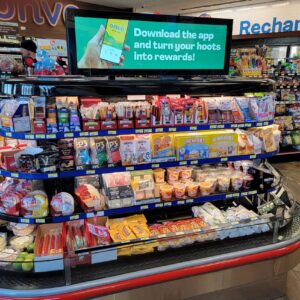
Explore the Many Benefits of Partnering with Gable
Gable’s innovative approach to digital signage displays and integrated systems isn’t just focused on hardware. It’s fueled by our desire to understand, enhance, and elevate your retail environment and results. Our service offerings merge multiple disciplines to create unique, dynamic solutions you won’t easily find elsewhere. We welcome the opportunity to discuss your RMN goals and how we can support them.
About Gable
Gable has been a leader in visual communications for over 40 years. We are passionate about elevating how people perceive, interact with, and remember brands, buildings, and places. With a rich legacy in blending the timeless artistry of traditional signs with the dynamic possibilities of video displays & integrated AV systems, Gable continues to shape the future of visual communications. For more information, visit gablecompany.com or call 800-854-0568.
